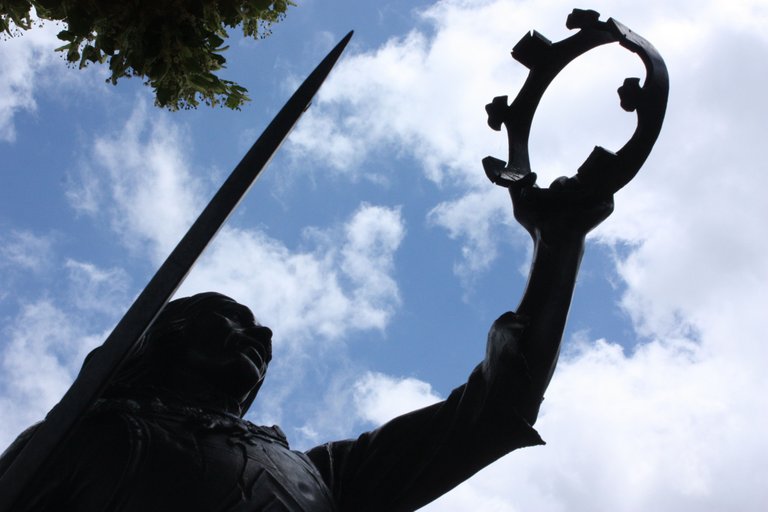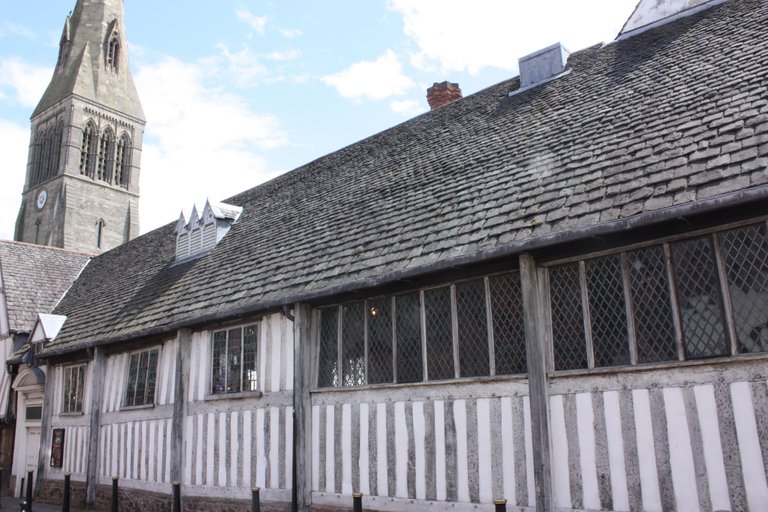
After the battle Richard III’s body was taken to Leicester where it was buried by the Grey Friars, a Franciscan Holy order, in their friary church. Although the local story was that Richard III’s bones were thrown into the river by a mob at the time of the Reformation, in recent times, a number of researchers still believed the remains were buried in the Greyfriars area of Leicester. Gradually, after further research a more precise location for his whereabouts was proposed: the north end of a city council car park at Greyfriars, the offices of its Social Services department. In August 2012, Leicester City Council, the University of Leicester, and the Richard III Society began a search at this location to find King Richard III’s remains and the Grey Friars Church. Five months after the dig began, the University of Leicester confirmed a skeleton unearthed by archaeologists was in fact Richard III.
The Richard III Centre is situated opposite Leicester Cathedral where Richard III was buried in March 2015 and it seems fitting to visit the Cathedral after the visitor centre. On the ground floor of the Centre there’s a short video presentation of the life of Richard until he became King in 1483. On the ground floor the exhibition described the events leading up to and including the Battle of Bosworth. There was a description of the day of the battle, who betrayed whom and what Richard’s role was in the battle
The two displays I found most interesting were close together. One was a discussion about the merits of Richard’s reign, although he had little time to make a difference. There was only one Parliament during Richard’s time as king, but this passed fifteen public statutes demonstrating his progressive attitude. Significantly, this was the first time that parliamentary statutes were published in English, so the ordinary people could read them and would know their rights.
The first public statute outlawed a practice by which land sellers might conceal from buyers that part of the land had already been sold. The second statute ended a practice instituted in Edward IV’s reign of demanding arbitrary taxes, known as “benevolences”. Although Richard was later forced to demand loans from certain of his subjects, the repayment of these loans was safeguarded, in contrast to the non-returnable benevolences of a predecessor.
The third statute introduced the first system of bail which protected people suspected of felony from imprisonment before trial. The fourth statute clarified who should be called for jury service. From now on, jurors were to be men of sufficient wealth in the hopes that they would less easily be corrupted or intimidated. Another statute standardised the weights system, so that people could be protected from being sold underweight measures.
Close by there was a large tablet with swipe technology allowing people to judge for themselves who killed the Princes in the Tower. A number of characters - including Richard III, Henry VII, Sir James Tyrell, The Duke of Buckingham, and Margaret Beaufort (Henry VII’s mother) - are depicted in the Tower of London, hiding behind columns, lurking in doorways, and all looking deeply guilty. The visitor touches one of the characters and an objective evaluation of whether that person had the motives to kill the princes as well as the evidence linking them with the crime.
The upstairs was mainly given over the to the excavation of Richard III, the identification of the body, and an analysis of the blows he received at the battle. The digging of the first trench on the first day of the excavation yielded a leg bone, which proved to belong to the king’s skeleton, a quite remarkable story in its own right. What’s more amazing is that an exact match was made between DNA found in the skeleton and that of his closest traced relative, Michael Ibsen, a furniture-maker living in London and Richard's great-nephew 17 times removed, a direct descendant of Richard’s eldest sister, Anne of York. Two blows Richard received to the head, one made by a sword and the other possibly by a halberd, were the fatal wounds indicating he was not wearing a helmet when he died. There were numerous other wounds, but these might have been inflicted after his death.
The final exhibit was the trench dug on the initial day of the excavation showing where Richard III had lain, in a slightly cramped position, for 527 years. Another excavation during Victorian times had removed Richard’s feet, showing that interest in his final resting place has not been continual during English history. It was quite humbling to see this hole in the ground, because it had taken a lot of people a long time to research the exact whereabouts of this king, who only ruled for two years, yet who has captured the public’s imagination thanks chiefly to Shakespeare’s skewed view of him as a Crookback, who murdered his way to the crown. I was so thankful that enough people cared to find him and give him a proper burial in Leicester Cathedral.
Richard’s tombstone made from strikingly pale Swaledale fossil stone is incised with a cross and rests on a low plinth made of dark limestone. This plinth displays Richard’s name, dates, motto, and coat of arms. The remains of Richard III are in a lead ossuary, inside an English Oak coffin crafted by Michael Ibsen and laid in a brick-lined vault underneath the floor and below the plinth and tombstone.




@julianwork, thank you for a splendid informative post on King Richard III,the search for his lost grave and your account of the Richard III Centre - excellent.
Thank you - it's nice to be appreciated, but to be honest with you, I've had enough of this site. Some awful articles get hundreds of dollars and the only answer can be that good writing isn't rewarded.
legend. nice!
Thank you.